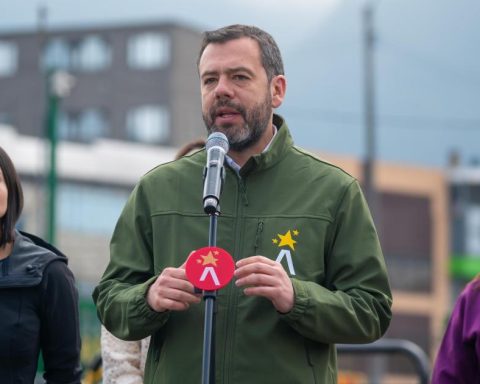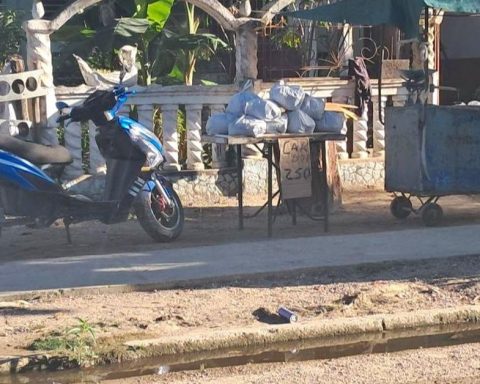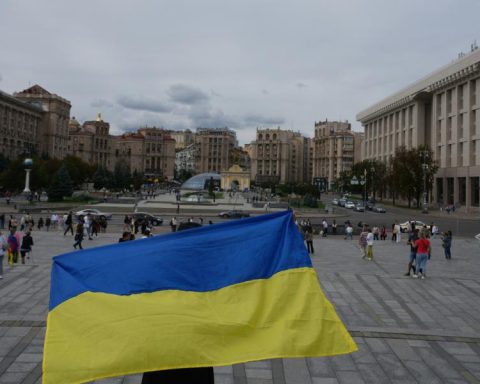Bankers are clear that the resources with which they finance people and different sectors of the economy are, in essence, the savings that millions of Colombians have entrusted them for their administration and custody, so they warn that the credit approval policies they have will not be relaxed and that if within the framework of the agreement they made with the Government to support the reactivation of some sectors of the economy, people or companies fail to pay the assigned loans, they will activate all legal mechanisms to recover the resources and in this way preserve the confidence that thousands of Colombians have in the financial sector.
(You may be interested in: Credit Pact: ABC of the agreement that avoided forced investments).
This is what Jonathan Malagón, president of the Association of Banks and Financial Institutions of Colombia (Asobancaria) and one of the architects of the recent Credit Pact, which the sector he represents sealed with the Government this week to boost various sectors of the economy through financing, says. In an interview with EL TIEMPO, he explained the conditions under which more than 250 billion pesos will be irrigated in the next 18 months, of which 55 billion come from said agreement.
Does an agreement of this nature open up space for other pacts to be promoted with the productive sector and clear the way for recovery?
We hope so. The Credit Pact has been fundamental as a prerequisite for moving forward in the dialogue tables that the National Government will establish with various sectors, including banks. With the announcement of the 55 billion pesos, a process of collaboration with businessmen will begin to define how these resources will be used and what the most appropriate instruments will be for their distribution. This approach will allow the credit to be channeled effectively and ensure that the resources reach those who need them most, contributing to strengthening the economy.
The financial sector will provide 55 billion more in loans to boost these key sectors of the economy. Do you think there will be sufficient demand from the productive sector?
The working groups that will be held in the next two weeks with the other sectors, and that will be led by the National Planning Department (DNP), will allow us to learn about the mechanisms for implementing the agreement, the demand and the most expeditious instruments to irrigate these credits.
(Also: Credit Pact: Reactions to the agreement between the banks and the Government).
What guarantees will there be to ensure that the resources given to these sectors will be recovered, especially those that irrigate the popular economy?
First of all, it should be noted that the resources that Colombians have deposited in the institutions will continue to be safeguarded by the financial system. This implies, and this was agreed with the Government, that the credits will be granted under market conditions, respecting the current regulations and preserving financial stability. In other words, the entities will continue to carry out their credit studies to analyze the risk of potential borrowers, which will allow mitigating the probability of expiration or default of the credits. In addition, the instruments that the Government has available to serve informal sectors, such as guarantees and rediscounting, will facilitate this irrigation.
Government and Asobancaria.
Private file
What is the Government’s commitment in this agreement?
The role of the Government will be fundamental in enabling a large part of these disbursements. Through the Bicentennial Group, and with the coordination of several ministries such as Finance, Housing and Agriculture, it is expected to have instruments that facilitate the irrigation of credit. Among them are subsidies such as Mi Casa Ya, the guarantees of the FNG and the FAG, the rediscount lines of Bancóldex and Finagro and the comprehensive incentive for agricultural risk management (IIGRA).
Will banks relax the conditions for granting these new loans and maintain their allocation and approval policies?
The banks will maintain the same credit allocation and approval policies that they have in place to date, which will allow them to continue safeguarding Colombians’ savings, comply with existing regulations and preserve financial stability.
What will happen if a company from the selected sectors or a person from the popular economy is not eligible for a loan established in the agreement?
It should be noted that the Credit Pact, while seeking to facilitate the granting of credit to sectors such as the popular economy, contemplates that the origination be carried out under responsible risk management, thereby preserving financial stability. In this way, public policy instruments such as guarantees and rediscounts should be used to increase eligibility in the most vulnerable segments.
(Here: National pact for credit won over forced investments).
As part of this major agreement, did the banks also commit to speeding up the reduction of interest rates?
The Credit Pact does not contemplate an agreement to reduce rates, since loans will continue to be granted under market conditions. This does not mean that interest rates will not continue to decrease in the midst of a competitive market. In fact, the banking sector anticipated the decision to reduce housing interest rates in the middle of this year and it is expected that, in general, loan rates will continue to fall thanks to the convergence of inflation towards the target and the decisions of the Bank of the Republic.
How does the banking sector view this agreement, which prevents forced investments from returning to the financial sector?
The Credit Pact is the result of dialogue and joint work between banks and the National Government within the framework of the economic recovery agenda. It was not a showdown between banks and the Government. This agreement is the response of the financial sector to the need to finance the recovery of economic growth, which is positive for the Government and for the sector and, without a doubt, is good news for the country.
When will the conditions of this agreement be active?
The Credit Pact begins this month. Some of the Government’s instruments will be implemented in subsequent months, but we hope to begin to boost credit in Colombia starting this September.
What should a company or individual do to apply for these loans under the agreed conditions?
Businessmen, people from the popular economy and home buyers will be able to approach financial institutions to choose the one that offers them the best conditions in terms of interest rate, term and loan amount. As specific financing programs are agreed upon with the Government, they will be communicated to the public.
How will these additional resources be distributed?
The additional 55 trillion pesos in disbursements over the next 18 months will be distributed as follows: 35.2 trillion pesos for manufacturing and energy transition, 6 trillion for the agricultural sector, 8.8 trillion for housing and infrastructure, 3.4 trillion for the popular economy and 1.6 trillion for the tourism sector.
If a company or person chosen for a loan under the conditions established in the agreement fails to meet their payment obligations, what can happen?
It should be noted that the loans disbursed by the program are made under market conditions, which allows banks to maintain the tools that can prevent and mitigate the credit risk associated with these portfolios. In the event of defaults in payment obligations, the conditions established for said credit must be analyzed since in some cases these may be backed by instruments such as guarantees, while in others they may be subject to refinancing or restructuring of the credit, as it works today.
When will we see the first results of this credit strategy?
The Credit Pact will begin this month, so that it can quickly contribute to boosting the economic recovery process. That said, it should be noted that the cuts to mortgage credit rates that the entities have been advancing and that are part of this strategy are already showing effects on household financing costs.
Has Asobancaria calculated how much it can boost the economy?
It is estimated that it will boost economic growth by about one percentage point more than what the majority of the market currently expects for the economy.

Credits
iStock
Where are the greatest risks of this plan failing to achieve its intended objectives?
We are fully convinced that the Credit Pact, as a comprehensive strategy for economic reactivation, will achieve the objectives set. It should be noted that, to the extent that the origination of credits will be subject to market conditions, the macroeconomic risks that arise, especially external ones, could affect the speed of the implementation of the program. These are risks, however, that are part of the economic dynamics, and that with the macroprudential regulatory mechanisms that the country has, we will be able to face them if they materialize.
What’s next after what was announced on Tuesday?
The next steps will be taken in three stages. The first is to sit down with the other sectors at the working tables that the National Government will organize, to specify the demand for credit and define the instruments that will most dynamize disbursements. The second is to work with the Government to guarantee the entry into operation of the state tools that enable more credit, including subsidies, guarantees and rediscounts. The third is to monitor the progress of the Pact, which will allow us to refine the instruments and strengthen the credit irrigation strategy.
Carlos Arturo Garcia Mahecha
Economy and Business EL TIEMPO


















